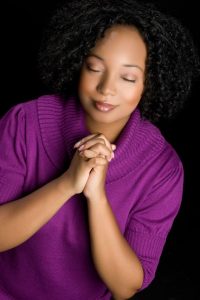 KK writes: “As a counter to yoga, why not publicize/popularize/promote our own prayer posture . . . to promote our rich heritage to satisfy the contemporary hunger for an all inclusive, whole being relationship with Our Majesty?”
KK writes: “As a counter to yoga, why not publicize/popularize/promote our own prayer posture . . . to promote our rich heritage to satisfy the contemporary hunger for an all inclusive, whole being relationship with Our Majesty?”
KK was generous enough to send an excerpt from a General Audience given by Pope Emeritus Benedict XVI on August 8, 2012, in which he speaks about the spiritual style of St. Dominic Guzman and his “nine ways of prayer.”
St. Dominic’s nine ways of prayer include: “Bowing as a sign of humility; lying prostrate on the ground to ask forgiveness for his sins; on his knees in penance, participating in the suffering of Jesus; with open arms gazing at the Crucifix in contemplation; with his gaze to the sky feeling the draw of God; in the intimacy of personal meditation; seated, quietly listening.”
During the catechesis, the Pope presented St. Dominic as “a man of prayer” and “an example of the harmonious integration between contemplation of the divine mysteries and apostolic activity”, such that “in every moment prayer was the power that renewed his apostolic work and made it ever more fruitful. . . . only a steady relationship with God gives us the strength to live with intensity every event, especially that of suffering.”
 And integral to prayer, “are our outward manners that accompany ‘dialogue with God’,” the Pope said.
And integral to prayer, “are our outward manners that accompany ‘dialogue with God’,” the Pope said.
What “outward manners” accompany our dialogue with God?
If you think about it, praying with the body is something that comes naturally for Christians – and most of us are hardly even aware of it. For instance, September 11, 2001, I had the day off from work and actually saw the first plane hit the World Trade Tower while standing at the register in the pet store. By the time I got home and turned on the television, the second plane was just coming into view. As it hit the building, I dropped to my knees and began to pray. And there I remained, glued to the television, praying, watching, until the moment the first tower collapsed. When I saw it implode, I fell prostrate on the floor, face down, praying the Chaplet of Divine Mercy for all of those people who were – in that very moment – losing their lives. For the longest time, I laid on the floor, my face in the rug, pleading with God to save those souls. And it all seemed so natural . . .
I can’t tell you how many people I see praying with their bodies every day in our perpetual adoration chapel who probably don’t even realize they’re doing it. The woman who never leaves without going up to kneel in front of the monstrance and kissing the ground beneath the altar; the businessman who bows so deeply his forehead touches the floor; the young father who prays with his head buried in his arms; the elderly woman who closes her eyes and lifts her face toward the monstrance. These are all ways that we pray with our bodies.
And it’s all so very scriptural. Think of the many examples in Scripture when the prophets added a bodily fast to prayers of entreaty to God.
The bottom line is that we don’t need the Downward Facing Dog pose in order to feel like we’re physically expressing our prayer.
Take a few moments today to notice what your body is doing while you’re praying. Are you sitting with your hands folded, your eyes closed, your face lifted? Are you laying down, sitting up, kneeling? Do these body positions have anything to do with what you might be praying at the moment? How might you use your body to express what you want to say to God?
And here’s one last thing to consider – our “poses” do have something in common with yoga – both are derived from religious practices and were never intended to be an exercise regime.
© All Rights Reserved, Living His Life Abundantly®/Women of Grace® http://www.womenofgrace.com









